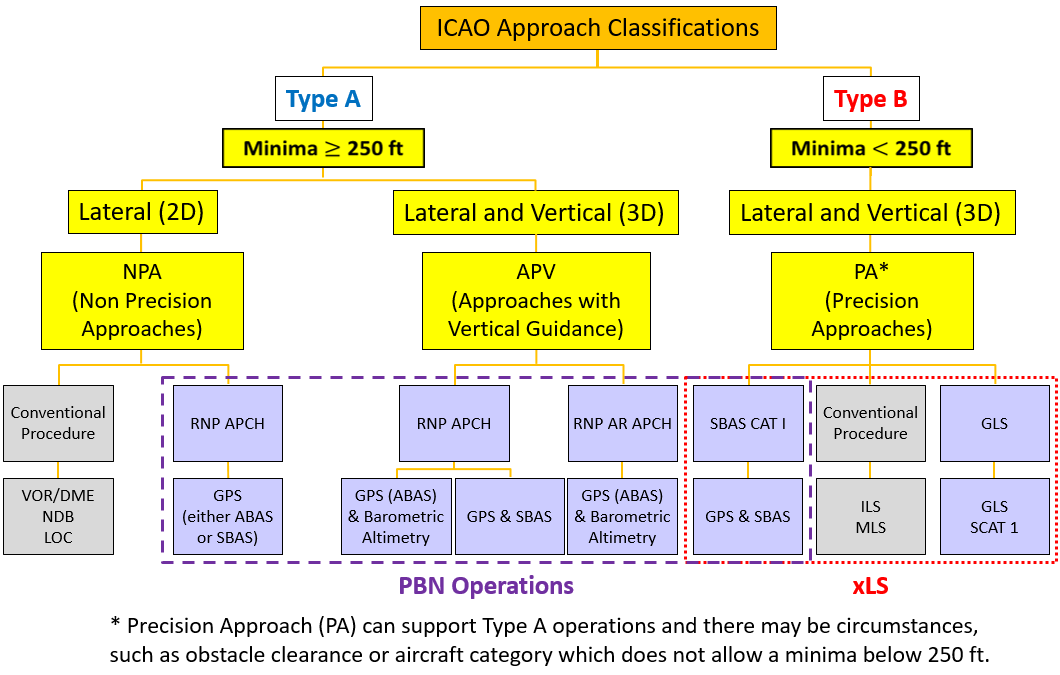ICAO Approach Classifications: Difference between revisions
No edit summary |
No edit summary |
||
| Line 18: | Line 18: | ||
3D IAO covers: | 3D IAO covers: | ||
# Precision: ILS with LOC and GS | # Precision: ILS with LOC and GS | ||
3D does not cover: | 3D does '''not''' cover: | ||
* RNAV GNSS VNAV even if your aircraft system displays GS due to advisory limitations and the lack of IAP minimas published in Australia | * RNAV GNSS VNAV even if your aircraft system displays GS due to advisory limitations and the lack of IAP minimas published in Australia | ||
Revision as of 21:08, 10 February 2025
The ICAO approach classifications.
instrument licences are divided between 2D and 3d IAP endorsements, and there are cases where pilots do not have access to a 2D IAP, or in some remote areas no access to 3D IAP.
2D IAP are divided between Lateral guidance with Course Deviation Indicator and Azimuth Guidance via a relative bearing indicator.
An instrument rating initial issue must test a 2D IAP [1] .
2D IAP covers:
- NDB
- VOR and LOC (if you have shown competency conducting VOR approaches, we consider you skilled enough to conduct LOC approaches)
- DGA (DME/GNSS arrival)
- RNAV GNSS LNAV (RNP LNAV) or RNAV GNSS LP (RNP-LP)
3D IAO covers:
- Precision: ILS with LOC and GS
3D does not cover:
- RNAV GNSS VNAV even if your aircraft system displays GS due to advisory limitations and the lack of IAP minimas published in Australia
Recency requirements to conduction an IAP:
- 3D IAP - an approach must have conducted in last 90 days
- 2D IAP - lateral and approach must have conducted in last 90 days
- Azimuth IAP - an Azimuth approach must have been conducted in the last 90 days

